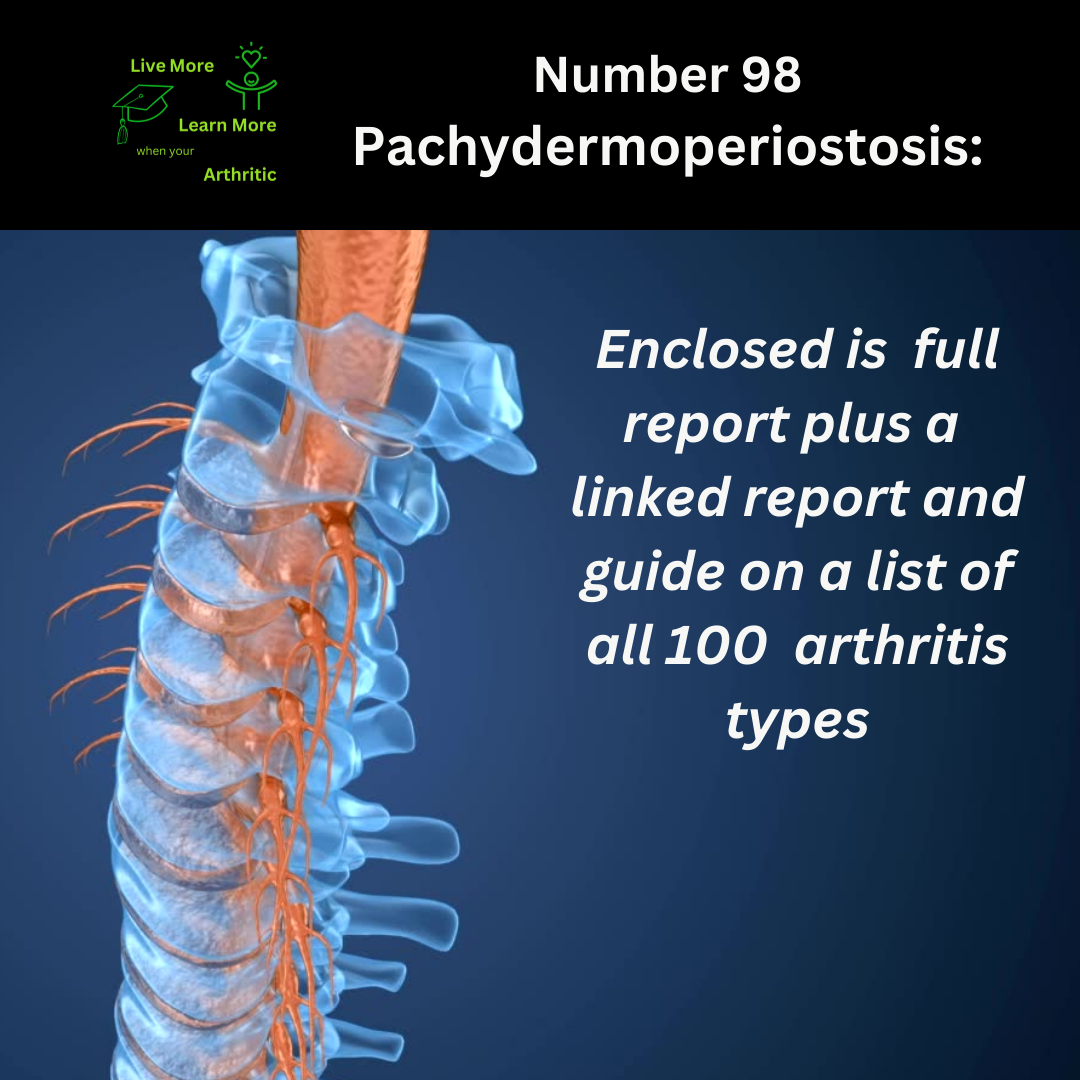
Pachydermoperiostosis: 98 on the list of 100 types of Arthritis
Understanding Pachydermoperiostosis: Unveiling Its Impact on the Body
Pachydermoperiostosis, also known as primary hypertrophic osteoarthropathy (PHO), is a rare genetic disorder characterized by skin and bone abnormalities. It affects multiple parts of the body, primarily the extremities, and can have a significant impact on quality of life.
 Affected Body Parts and Joints
Affected Body Parts and Joints
The manifestations of Pachydermoperiostosis primarily involve the fingers, toes, wrists, and ankles. In more severe cases, larger joints like the knees and elbows may also be affected. The condition is characterized by clubbing of the fingers and toes, thickened skin (pachydermia), and excessive sweating (hyperhidrosis).
Remission and Disease Progression
Remission in Pachydermoperiostosis is uncommon due to its progressive nature. The disease typically manifests during adolescence or early adulthood and worsens gradually over time. It is caused by mutations in the HPGD gene, which plays a role in bone and skin development.
Symptoms and Limited Range of Motion
Common symptoms of Pachydermoperiostosis include joint pain, stiffness, and restricted movement due to bone overgrowth and thickened soft tissues. Patients may experience difficulty with activities of daily living and reduced flexibility in affected joints.
Causes, Triggers, and Genetics
Pachydermoperiostosis is primarily genetic, with mutations in the HPGD gene inherited in an autosomal dominant manner. However, some cases may arise sporadically without a family history. The exact triggers for disease progression are not fully understood.
Impact on Quality of Life and Life Expectancy
While Pachydermoperiostosis itself is not life-threatening, its associated symptoms and complications can significantly affect quality of life. Joint deformities, pain, and functional limitations may impact daily activities. The condition does not typically affect life expectancy.
Inflammation and Joint Complications
Inflammation plays a role in Pachydermoperiostosis, contributing to joint swelling, tenderness, and discomfort. Over time, bone changes and joint deformities can lead to chronic arthritis-like symptoms and impaired mobility.
Cartilage Involvement and Comorbidities
Cartilage may be affected secondarily by bone overgrowth and joint changes in Pachydermoperiostosis. Comorbidities can include secondary osteoarthritis, skin conditions related to pachydermia, and complications from joint deformities.
Management and Proactive Approach
Management of Pachydermoperiostosis focuses on symptom relief, preserving joint function, and improving quality of life. Treatment may include nonsteroidal anti-inflammatory drugs (NSAIDs) for pain management, physical therapy to maintain mobility, and surgical interventions for severe joint deformities.
Possible Complications and Age Distribution
Complications of Pachydermoperiostosis can include joint contractures (permanent joint stiffness), bone deformities, and psychological distress due to visible physical changes. The condition predominantly affects males, with symptoms typically appearing in adolescence or early adulthood.
 Associated Diseases and Conditions
Associated Diseases and Conditions
Patients with Pachydermoperiostosis may have associated skin disorders, such as seborrheic dermatitis or acne, due to abnormal skin thickening. Regular monitoring by a multidisciplinary medical team is essential to address both primary symptoms and potential secondary conditions.
Navigating Pachydermoperiostosis requires a comprehensive understanding of its genetic basis, clinical manifestations, and impact on daily life. Multidisciplinary care and personalized management strategies can help optimize outcomes and improve the quality of life for individuals with this rare condition.

